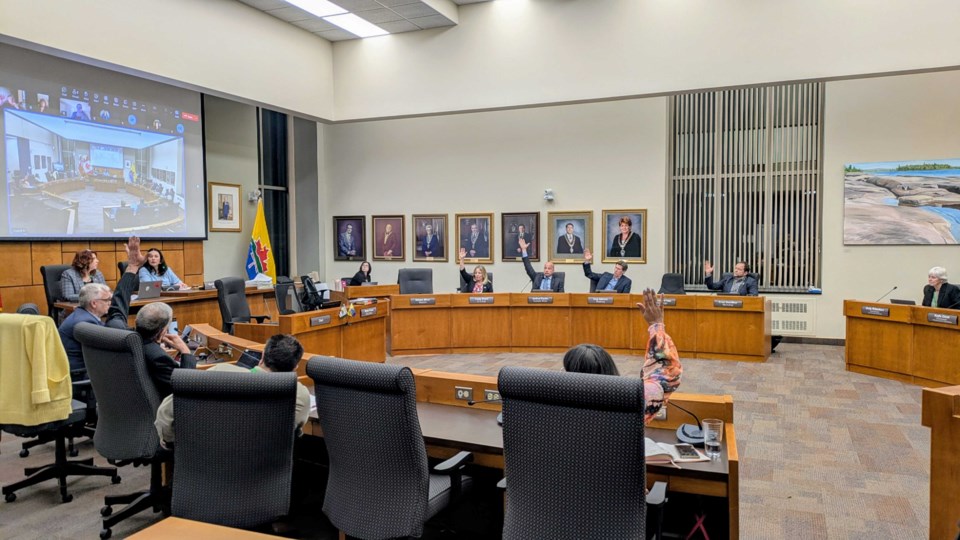THUNDER BAY – City staff are proposing to shift more of the tax burden onto detached family homes, and away from businesses and apartments.
For a house assessed at $219,000, the median home value in Thunder Bay, that shift would mean an extra $7.83 on the tax bill, according to Kathleen Cannon, director of revenue.
At the June 16 committee of the whole meeting, council was split on whether to accept staff’s recommendation to lower commercial, large industrial, and multi-residential tax ratios, effectively increasing the proportion of taxes paid by other property classes.
The residential tax rate is the baseline that other tax rates are based on, explains Cannon. A tax ratio is a multiplier added to the residential rate to determine rates for each other class.
"So, if commercial is a ratio of two, it would take the residential tax rate and multiply it by two, and that would be the tax rate for commercial,” Cannon said.
Administration is recommending the city reduce the tax ratios by 0.12 for large industrial properties (from 2.73 to 2.61) and by 0.01 for multi-residential (1.99 to 1.98) and commercial (1.98 to 1.97) properties.
“What happens is that when you change a ratio for the commercial, industrial, and multi-residential, it goes down, so those tax rates are going to be a little bit lower. That would have the impact of shifting taxes onto all the other property classes,” said Cannon.
“So, if you lower multi-residential, it's gonna shift some taxes to residential to commercial, to large industrial to industrial, all the classes. It does that for each of them. And, the end result is, of course, that residential is obviously getting some of the taxes shifted.”
Shifting the tax ratios does not affect the tax levy, the total amount of taxes collected, which was set at $381 million when the 2025 budget was finalized in February.
With the proposed changes to the tax ratios, the owner of a single family home would see a 3.71 per cent increase in their taxes. For that median-valued $219,000 home, that's a $145.80 increase.
If the city leaves its tax ratios as-is, that same homeowner would still see a $137.97 increase.
The rationale for the change, Cannon told council last Monday, it that it “promotes economic growth in the long term.”
“If we can attract businesses to Thunder Bay, it'll lower the tax burden on existing taxpayers. It enhances the city's long-term financial stability and provides greater equity among our property classes, and the residential property class continues to remain affordable.”
Over the last 10 years, 77 per cent of the city's assessment growth came from the residential property class, according to Cannon.
Cannon said Thunder Bay residential taxes are lower than the provincial average in cities with a population of 100,000 or more, according to a BMA consulting study.
“Thunder Bay's residential taxes remain competitive and below the average for cities our size. The taxes for a single-family detached home in Thunder Bay are $414 less than the average in cities our size,” she said.
“Growth is new revenue, so it's not shifting more of a burden onto the existing taxpayers; it's simply changing the city's overall distribution of the tax levy.”
Commercial, industrial, and multi-residential tax ratios in Thunder Bay are higher than the provincial average, according to that same study, said Cannon.
In 2024, Thunder Bay's multi-residential ratio was 1.99 compared to the average of 1.67. Commercial ratio was 1.98 compared to the average of 1.66. The large industrial ratio was 2.73 compared to the average of 2.12.
“Higher tax ratios on commercial and industrial properties make Thunder Bay less competitive. By gradually adjusting these ratios, we can better position Thunder Bay for economic growth without negatively impacting residential tax affordability,” said Cannon.
City council will revisit the 2025 tax policy next Monday, when all members of council are expected to be in attendance for the vote on the designated truck route.
